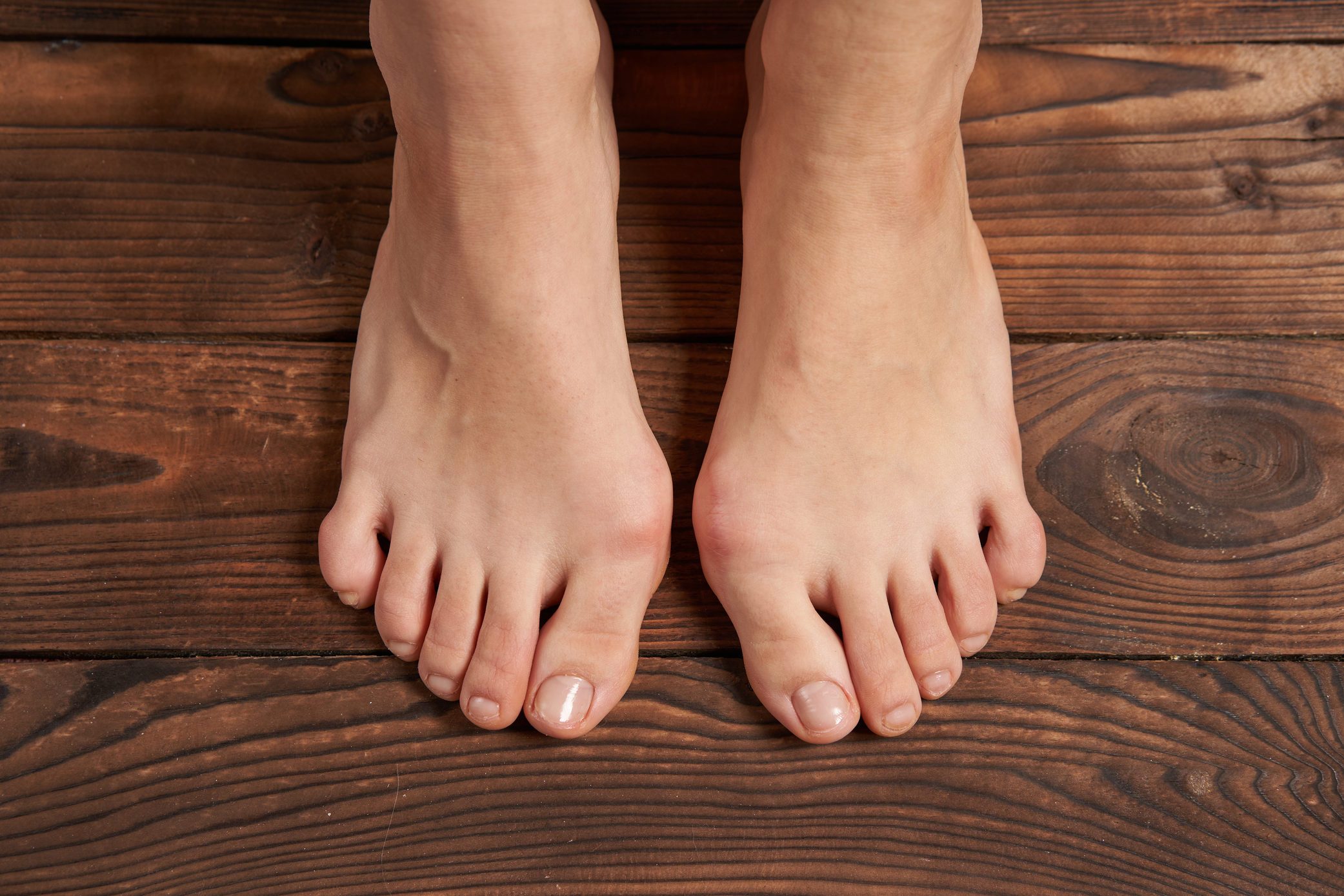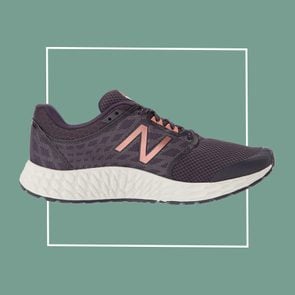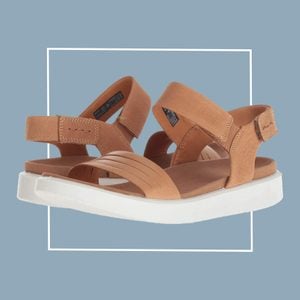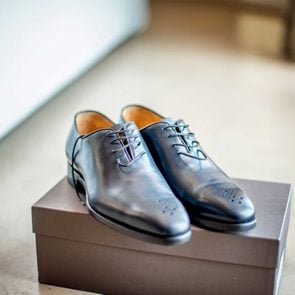6 Bunion Pain Relief Tips from Podiatrists
Updated: May 03, 2021
Many people can relieve bunion pain with at-home remedies. Learn what causes a bunion, symptoms to look for, and what doctors suggest you do to treat your bunion pain and find relief.
Managing bunion pain
Bunions are one of the most common foot problems you can get. It’s estimated that about one-third of people over the age of 65 have a bunion, though you can get one at any age. They’re dreaded for a reason: They can cause a lot of foot pain.
A bunion is a bony bump that develops at the base of the big toe, right at the joint that connects the toe to the foot. Bunions form over a long period of time. They can get larger and cause the big toe to angle inwards. This is a joint deformity known as a hallux valgus, and the big toe may lean so far to the side that it crosses over or under the next toe, or pushes other toes out of alignment.
In addition to causing pain, bunions can make it difficult to wear regular shoes or to do certain activities. (Many people are bothered by how their bunions look, too.)
(Here are some suggestions from podiatrists for the best shoes for bunions.)
An ignored bunion will get worse over time and can become even more deformed and painful. It can even affect other parts of your foot and body as it worsens.
While there’s not much you can do to get rid of a bunion completely (other than have surgery), there’s plenty you can do to find bunion pain relief and to slow the bunion’s progression so it doesn’t significantly interfere with your life.
What causes bunions?
Bunions form when repeated pressure on the big toe joint pushes it out of alignment, causing it to protrude to the side.
Genetics
Genetics play a big role in whether or not you’ll get a bunion, says Zachary Flynn, DPM, a podiatrist and fellowship-trained foot and ankle surgeon at Phoenix Spine & Joint in Arizona.
You may wear flimsy flip-flops your whole life without getting a bunion, while someone who is naturally prone to the condition may wear extremely supportive shoes but develop a bunion at age 25.
Gender
Women are generally more prone to bunions than men, both because they tend to have weaker connective tissue in their feet and because they are more likely to wear strappy, heeled, and downright uncomfortable shoes in the name of fashion.
Aside from weak connective tissue, a short Achilles tendon, short calf muscles, and joint diseases like rheumatoid arthritis can also increase a person’s risk of bunions, as can having really flat or overly arched feet.
Muscle imbalance
With a muscle imbalance, you might walk in a way that contributes to bunion formation.
“If [a muscle] is too weak or too tight and that pulls your leg out of alignment, your natural gait can become slightly off,” says Houman Danesh, MD, director of integrative pain management at The Mount Sinai Hospital. “The next thing you know, you keep doing it and pushing off [the inside of your foot], where the bunion is forming, rather than the tip of the toe.”
The body adapts to this repetitive stress by forming a bunion. (These are the best summer shoes for flat feet.)
Poor shoe choices
Poor shoe choices aren’t the biggest driving factor of bunion formation, but they can definitely contribute by forcing your feet into an unnatural position.
High heels—which cause pressure to dump into the front of the foot—and narrow, pointed toes are both bad for bunions. (Learn about the shoe mistakes that are hurting your feet.)

Bunion signs and symptoms
Some bunions aren’t painful and only cause minor deformities. Other bunions can cause significant pain and make it hard to wear shoes or even walk. Bunions can restrict the range of motion in the affected toe.
If your bunion causes your big toe to press on the next toe, you may feel pain in the second toe. And if your big toe crosses over the next toe, your second toe may shift out of alignment, too.
It’s a good idea to seek medical care when you notice a bunion, even if it’s minor, so you can learn ways to slow down the progression and prevent it from quickly getting worse.
Bunion pain usually feels like a deep ache, Dr. Danesh says. The bone can be tender to the touch and usually hurts more when you put weight on it or something (like a stiff shoe) presses against it. The joint may look red and inflamed.
(Is it gout or a bunion? Here’s how to tell.)
Calluses can form
If a bunion is advanced enough that the big toe crosses over the next toe, the toes may also rub against each other constantly and form calluses. Bunions can also cause calluses on the bottom of the foot.
Osteoarthritis can develop
Over time, osteoarthritis can form in the impacted toe joint, causing an achy pain and stiffness. Bunions can also lead to bursitis (inflammation of the bursa) in the big toe joint. A bursa is a fluid-filled sac that cushions the joint—you’ve got one in your big toe. Bursitis can cause additional pain, swelling, and stiffness.
Other signs and symptoms
According to Dr. Danesh, foot issues that throw off the way you walk, like bunions, can impact more parts of your body than you’d think—everything from your knees to your hips to your lower back and even your neck, causing headaches.
Here’s why: When your foot is deformed, you put pressure on other parts of the foot.
Force from hitting your foot against the ground as you walk can travel up the body, affecting joints that typically are not subject to these forces when the feet are functioning as designed, he explains.
How bunions are diagnosed
A foot doctor will typically diagnose any foot problem—including bunions—by first talking to you about your health history and symptoms, and doing a physical exam.
If your podiatrist can’t fully determine what’s going on, he or she will order an X-ray.
An X-ray will show just how misaligned your toe joint is and can help your doctor figure out the best solutions for pain management.
If you end up needing surgery after trying more-conservative pain-relief options, an X-ray will help your doctor pinpoint the best method for realigning the bone.
How to relieve bunion pain
For many people, taking some conservative at-home measures can relieve bunion pain and prevent a bunion from getting worse.
As long as your bunion isn’t causing you pain or preventing you from doing things, there’s no need to do anything else. In severe cases, surgery may be necessary.
Here’s what experts suggest to get rid of bunion pain.
Take OTC medications
Nonsteroidal anti-inflammatory drugs (NSAIDs), like ibuprofen, can help relieve inflammation and pain caused by bunions. You shouldn’t take them for an extended period of time, though.
NSAIDs all have potential side effects, including kidney damage and stomach ulcers, and certain medical conditions can increase your risk of developing these effects. Always follow the instructions on the label. Typically, you should limit your NSAID intake to just a few days.
Wear toe spacers at night
Special toe spacers and support devices may help relieve bunion pain and slow progression by keeping the big toe in a normal position. The research isn’t clear on whether toe spacers actually work. (Here’s one woman’s review of YogaToes for foot pain.)
But they’re thought to be harmless, so you may want to give them a try to see if they help you. Splints and supportive devices like toe spacers can be worn during the day or overnight, depending on the type you buy.
Choose supportive footwear
Dr. Flynn says that most of the time, he guides patients toward sneakers meant for long-distance running to help reduce bunion pain. He recommends brands that sell wider versions, like New Balance and Brooks.
Other things to look for in a good shoe: a large toe box, mesh or other soft and flexible material on the top of the shoe and around the toes, arch support, ample cushioning to absorb shock from the ground, a supportive heel, and stability features that help prevent your arch from collapsing inward, a phenomenon called overpronation.
Make sure you’re wearing the right size.
“Proper shoe sizing is important, especially the width,” says Amy Dunetz, DPM, a Florida-based podiatrist. The best way to know your size is to get your foot measured for length and width.
(These are the best slippers for your feet.)
Use orthotics or bunion pads
Orthotics, which are inserts you put inside your shoes, can help control pronation and take pressure off the bunion, Dr. Dunetz says. Your doctor may prescribe custom orthotics or guide you in how to buy an over-the-counter pair.
You can also buy bunion pads at the drugstore. They’re meant to cushion the bunion and ease pressure. However, some pads may make your bunion feel worse, so test out various types at home before wearing one when you’re out all day. Here’s more about the different types of bunion correctors and some recommended products.
Physical therapy
A 2016 study published in the Journal of Orthopaedic & Sports Physical Therapy suggests that certain foot-, hip-, and leg-strengthening exercises can help correct muscle imbalances that lead to wonky walking patterns and ultimately bunions. (In fact, here are a few bunion exercises you can try.)
“Focusing on ankle mobility, flexibility of the muscles from the foot all the way up to the hip, and making sure you walk correctly,” are all beneficial, Dr. Danesh says. You may also benefit from toe-spreading exercises and exercises meant to strengthen the muscles that pull the toes into place.
The best way to do this is to work with a physical therapist, who can give you one-on-one attention, assess the way you walk, and guide you through exercises to help correct your gait. This won’t get rid of a current bunion, but may stop it from getting worse.
Surgery
“Conservative treatment options work well with certain bunion types,” Dr. Dunetz says. But some people may need more invasive treatment. “If pain persists, surgery may be necessary, especially for large bumps and joints with severe osteoarthritis.”
During bunion surgery, your surgeon will realign or remove part of the bone. The ultimate goal is to shift the toe joint back to where it belongs so you can regain function and walk pain free. Depending on the bunion and your foot, your surgeon may also move or shorten the surrounding ligaments, tendons, and nerves.
Full recovery can take months and, as with any surgery, can come with complications (though they are usually treatable). It’s important to discuss all of your options with your doctor to determine if surgery is right for you.
(Psst, here are the secrets your surgeon won’t tell you.)
The last word
Ideally, you can manage your bunion and get rid of pain with lifestyle changes and minor treatments, instead of surgery. But just know that you do have options and don’t need to live with excruciating bunion pain forever.
Next, these are the foot-health secrets you should know.



